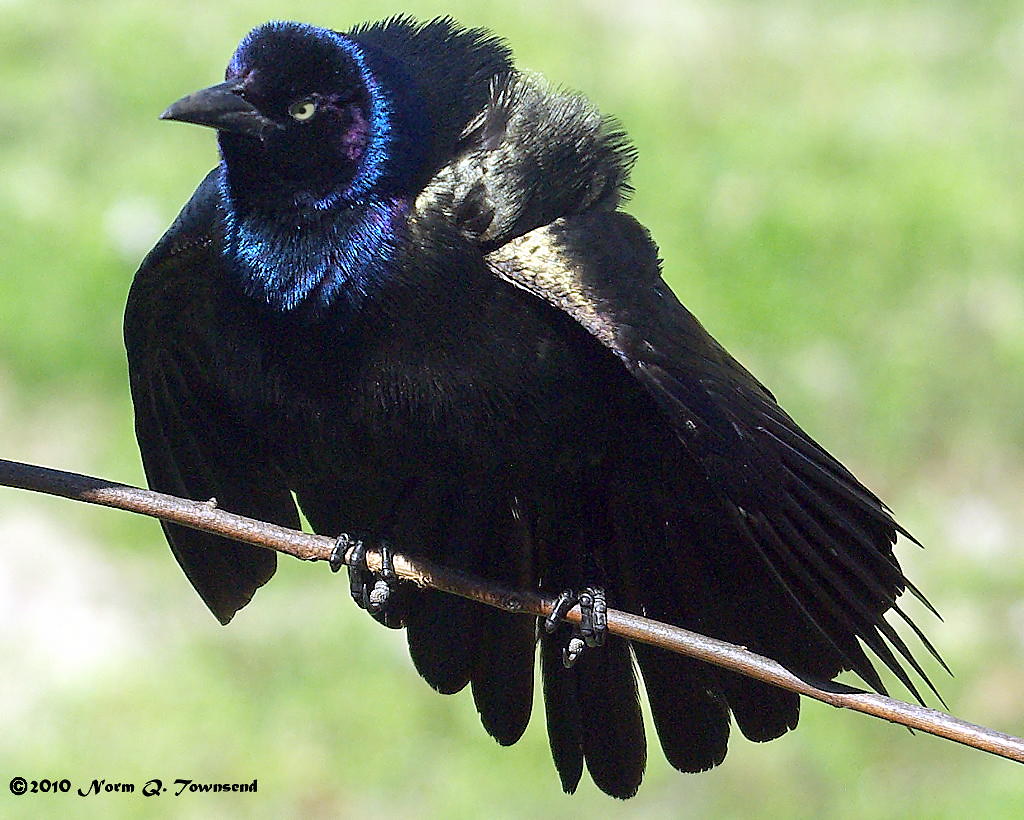
23 March 2023
Lek: an assembly area where animals (such as the prairie chicken) carry on display and courtship behavior. Also an aggregation of animals assembled on a lek for courtship.
— Merriam-Webster Dictionary
Male prairie chickens hold a lek to attract females and according to this diagram so do “grackles.” It was exciting to think that the puff and “skrinnk” of male common grackles in Pittsburgh was a lek. But it’s not! The three species of grackles in North America lead very different lives.
Common grackles (Quiscalus quiscula), are usually monogamous and may nest alone or colonially with up to 200 pairs in a single colony.
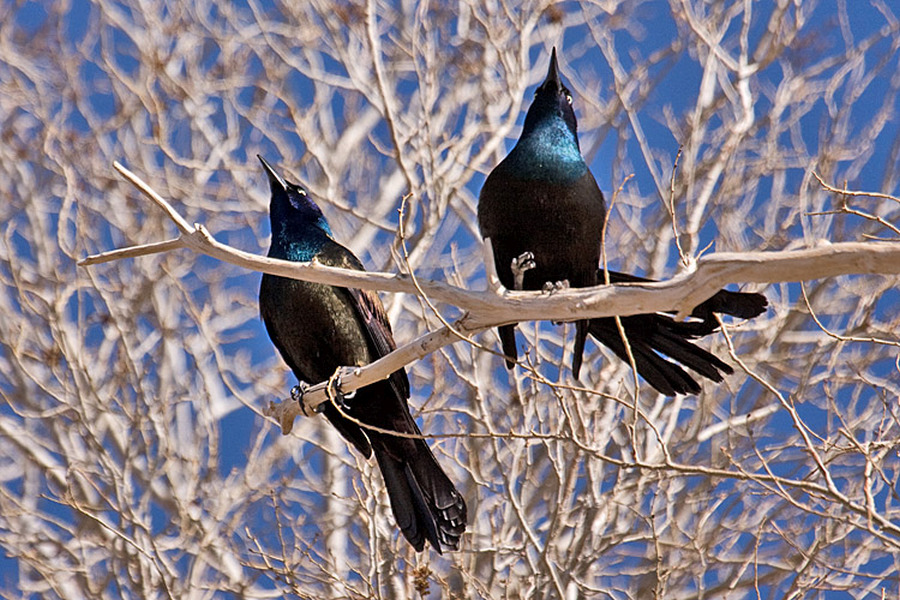
Bill Up is a male-to-male threat display. The puff and skrinnk is Song during courtship.
Boat-tailed grackles (Quiscalus major), found in Florida and along the Atlantic and Gulf coasts, nest in harems. The males gather in leks to attract the females.
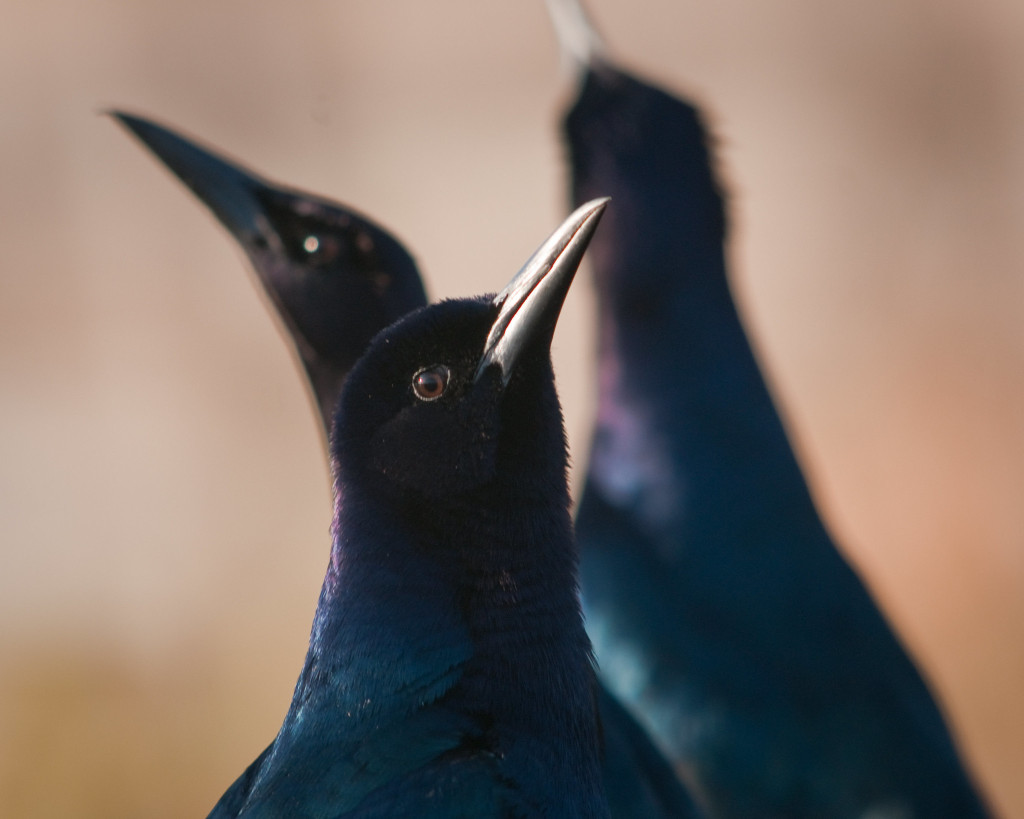
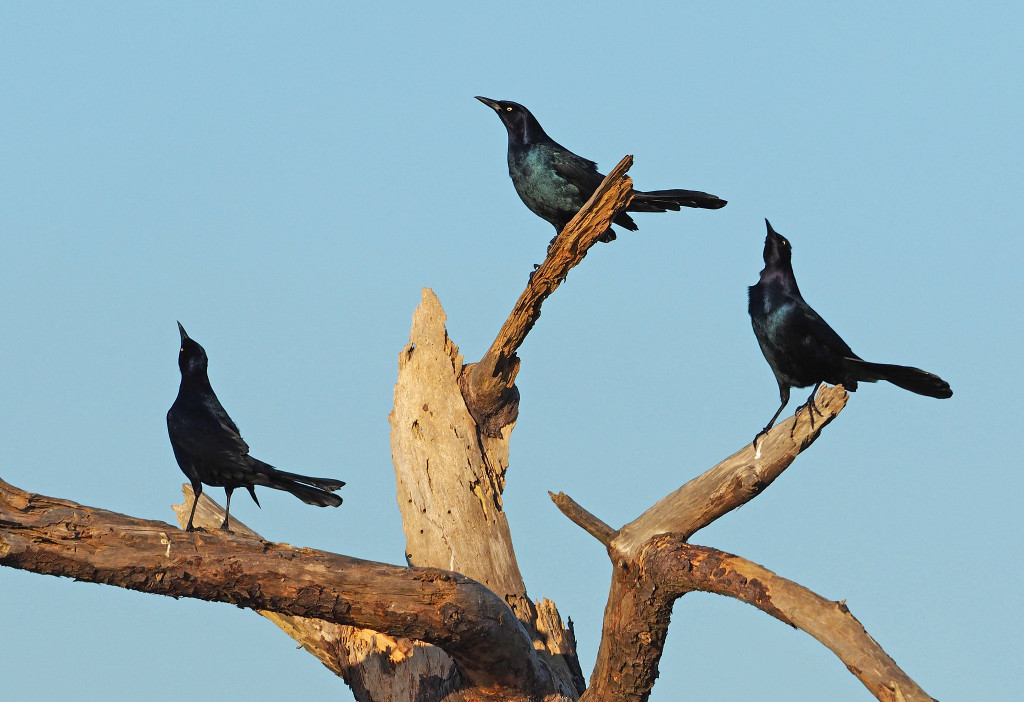
Female boat-tailed grackles are dull brown and laid back compared their male counterparts.
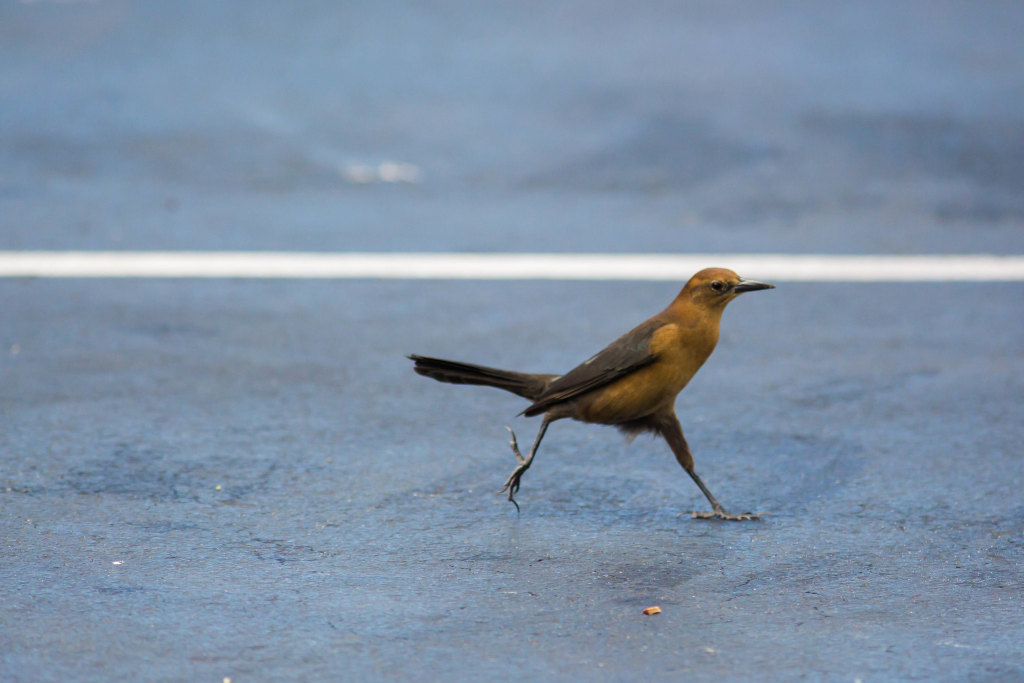
Great-tailed grackles (Quiscalus mexicanus), found west of the Mississippi and in Central America, gather in noisy winter flocks.
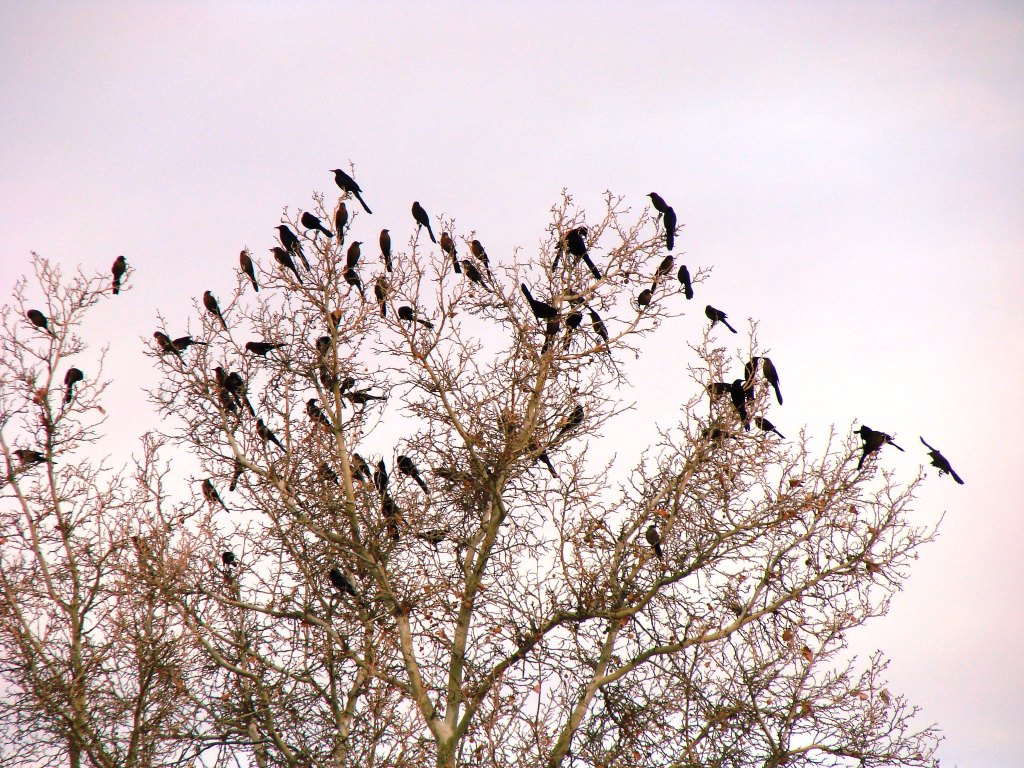
In the breeding season they don’t use leks and they aren’t monogamous.
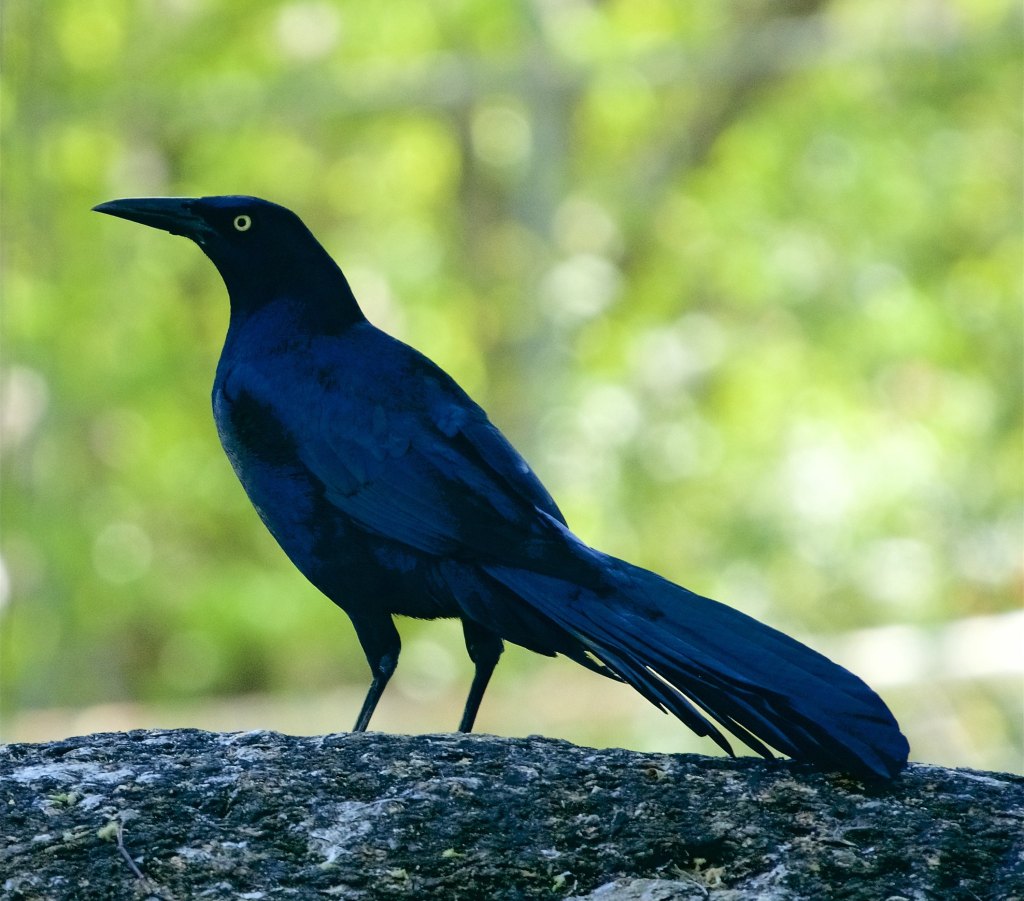
Birds of the World explains:
[Their] mating system can be described as non-faithful female frank polygyny, in which a territorial male has one or more social mates, each female has one social mate, and both sexes employ extra-pair copulation as a conditional mating tactic. Territorial males defend a small territory including from 1 to several trees, where one or more females nest. The male protects nestlings hatched on his territory, but not nestlings from other territories. He copulates with his social mates and may attempt to copulate with other females.
— Birds of the World: Great-tailed grackle account
Frankly, all the great-tailed grackles mess around. Even the females swagger.
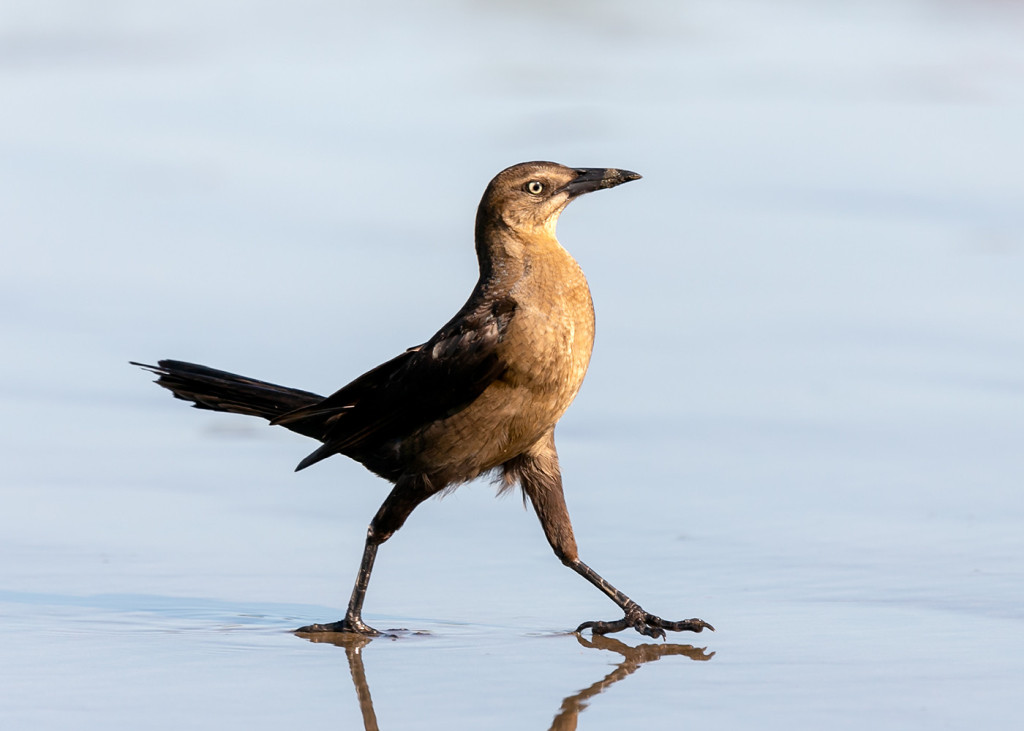
Though they’re all called “grackles” they don’t act the same.
(photos are Flickr Creative Commons licensed and credited in the captions, click on the captions to see the originals)